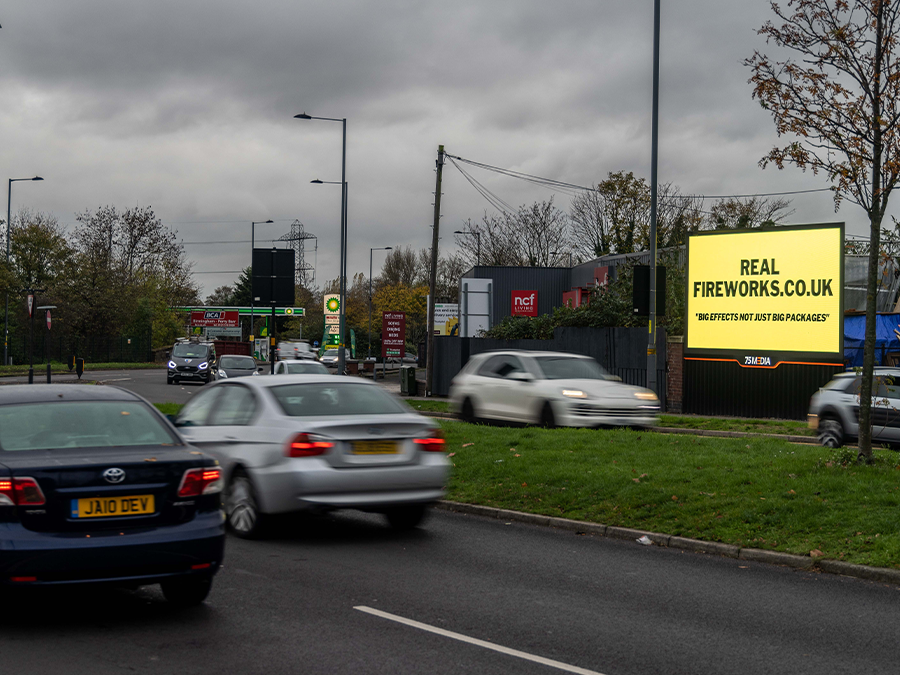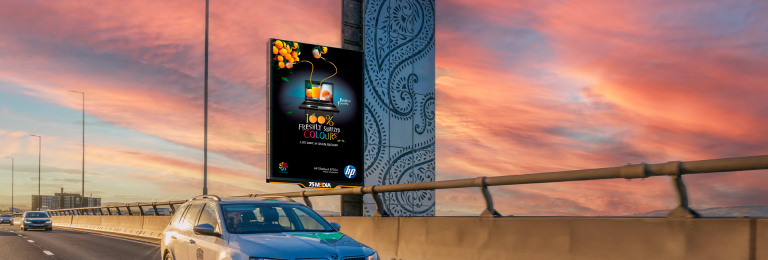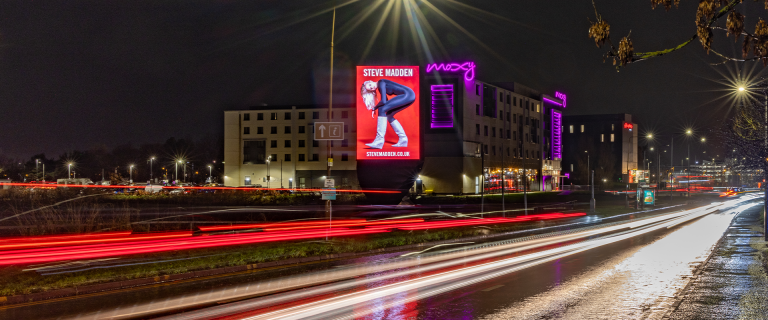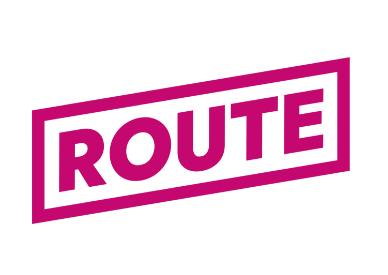For raising brand awareness in your local area and boosting sales, you’re unlikely to find a more effective method of promoting your business than outdoor advertising.
Between strategically placed roadside billboards and digital out of home (DOOH), outdoor advertising is ideal for putting your business in front of potential new customers and amplifying your key messages.
Many small businesses believe the misconception that out of home (OOH) advertising is expensive and ineffective, but that couldn’t be further from the truth.
Capturing the attention of your target audience on their way to work, or in the places they frequent the most, is the first step in attracting them to your business and, in turn, driving engagement and sales.
In this guide, we’ll explore how you can capture the attention of potential customers and dominate your local market using outdoor advertising.
Planning Your Outdoor Advertising Campaign
When it comes to launching a viable outdoor campaign within the local marketplace, your efforts should be built on one or more clearly defined objectives.
In short, you should only launch your campaign once you have an end goal in mind, with OOH ads serving as the tools with which you’ll achieve your objective.
Determining precisely who you’re trying to reach gives you the ideal starting point, as having a clear understanding of your target audience will impact on everything from the placement of ads to the content and messaging that you utilise to engage them.
But how exactly do you identify and understand your customers?
Create Customer Profiles
One option is to create a ‘buyer persona’, which is a semi-fictional representation of your ideal consumer.
This can be built from existing consumer datasets and targeted market research within the local area, and will include information such as age, demographics, behavioural patterns and motivations.
Ultimately, it should embody your target customers and provide an in-depth understanding of those who you want to appeal to.
Carry Out Detailed User Surveys
Whether you’re a start-up venture that’s targeting local customers from scratch, or if you’re looking to expand your reach to new demographics, we’d recommend using tools such as Survey.io to gain initial consumer insights into your products and services.
You may need to be prepared to incentivise participants (such as by providing free samples where possible) in order to gain large volumes of first-hand feedback.
The key is to create detailed and concise questions, while focusing on potential customers’ motivations and how they interact with your brand.
Make Use of Google Analytics
We’ve touched on the importance of creating an integrated marketing campaign, but you’ll also need to use a wide range of channels to identify a target audience.
Google Analytics can be particularly insightful, as this provides unique datasets such as audience interests and the precise location of customers.
This also delves into behaviour and the technology used by customers when interacting with the brand, which is crucial when building out the finer details of your campaign.
Setting An Objective
Arguably the most crucial element of planning your outdoor advertising campaign is to set an overall objective.
To ensure its success, it’s important to determine precisely what action you want your customers to take as a result of seeing your ads.
Having an objective clearly defined at the start of your campaign planning will help to determine the content of your ads, the tone of your messaging, and even the locations you choose to advertise in.
So it’s vital that any outdoor advertising campaign is built with a clear goal in mind.
For example, to increase footfall and sales in your shop, you may advertise a limited time, in-store only sales promotion.
Or, you may choose to use brand focused messaging (rather than sales focused) if your goal is to increase brand awareness and engagement on social media.
Where Should You Rent Outdoor Space?
Choosing the right locations for your outdoor advertising campaign is crucial. What determines the right location will vary depending on your business, campaign goals and the people you’re trying to reach.
In simple terms, you’ll need to ensure that you’re placing ads in locations where your target audience is most likely to be found, based on a range of factors such as:
- Traffic flows
- Where your target demographic lives
- Where your business is based
- Your customers’ interests and daily routines
- The core purpose of your campaign.
For example, let’s say that you are advertising a local takeaway restaurant to a young professional audience who are likely to commute to and from work everyday.
With this insight in mind, you may invest in outdoor advertising spaces on busy main roads to capture large numbers of your target market while they are on their commute to and from work.
Hungry commuters will often be thinking about their evening meal on the way home, so advertising on main commuter routes close to your restaurant can capitalise on impulse decision making and direct them to their nearest location or encourage them to order online.
This type of campaign has been previously undertaken by brands such as McDonalds who reported gaining 6.4 million mobile impressions by combining outdoor advertising and in-app advertising on Waze.
But it’s not just large scale campaigns like this one that get results from outdoor advertising.
Small, local businesses across the UK are reaching new customers each day through strategically placed billboard ads.
When choosing where to advertise your business, here are some other things you should keep in mind:
Invest Time in Demographic and More Detailed Customer Research
If you want to target a specific target market, or understand your target market better, you should also consider carrying out user demographics and detailed consumer research on sites such as Acorn.
This powerful resource works by segmenting the population into 62 different types, enabling you to drill deeper into your target market and provides a more detailed insight into audiences and their behaviours.
This can be applied when tracking any behavioural changes in existing audiences and identifying profitable prospects, while it can also be used throughout campaigns to make any necessary adjustments to ad locations and content.
Focus on Levels of Traffic and Footfall
It’s also important to appraise potential target locations in terms of the level of traffic that they benefit from on a regular basis. This will ensure that you’re targeting key areas based on a number of seminal factors, and there are several tools and metrics that you can utilise to monitor locations.
One of the most widely used is a travel survey. Participants are given a device with an in-built GPS tracker and Wi-Fi connectivity as well as a compass and accelerometer, which they carry with them for up to two weeks.
Participants also answer extensive questions pertaining to their lifestyle and shopping habits, providing practical insight into where people are going on a daily basis and the high-traffic locations that they’re likely to frequent. Acquiring data from a travel survey can therefore provide you with invaluable insights into your target demographics.
Determining the effectiveness of individual ad locations
- Reach & Impressions – Reach refers to the number of unique individuals who see an advert, and impressions is the number of times that a particular ad is seen.
- Frequency – Frequency can be determined by dividing impressions by reach within a specified time frame (e.g. two or four weeks). Knowing the frequency that an ad is seen at will help you understand which locations benefit from the most traffic over time.
When To Run Your Ad Campaigns
Once you’ve created a plan in terms of where and how to target your audience, the next step is to time your campaign to achieve the best possible levels of engagement.
This is particularly important if running a time sensitive campaign, as you’ll need to identify precisely when your prospective customers are most likely to engage with your brand.
If you’re planning a campaign around peak trading (in the lead up to Christmas, for example), to maximise the impact of your campaigns, you may with to also run strategically placed billboard ads in advance of these peak times.
This way, you can build brand awareness early on and ensure that local shoppers are already aware of your brand.
When To Book Your Ad Space
When planning an outdoor advertising campaign, especially around peak times, you will need to be proactive, as there is likely to be intense competition.
This is especially true for those targeting the most popular, high traffic locations, such as on main roads leading into city centres or around shopping centres.
If you are planning an out of home campaign, you should start contacting outdoor advertising firms as early on as you can.
But as a rule, if you want to secure your preferred locations, be sure to book 3-6 months in advance.
Tip: You can sometimes minimise your advertising costs by securing paper or digital billboards on long term bookings that extend beyond the typical two week hire time.
Planning your campaigns in advance, looking beyond the immediate term and booking early can be highly beneficial.
Types Of Outdoor Advertising Available
Classic Billboards
Paper billboards are central to many successful out of home ad campaigns, with a variety of sizes available in a range of prime locations.
One of the key benefits of choosing classic billboards, aside from the low cost, is that they offer exclusive advertising space.
When using digital boards, you are often sharing the space with up to 5 other advertisers (meaning that your ad may only show for 10 seconds at a time).
Whereas the nature of classic billboards means that no matter what time some walks or drives past the location, your messaging will be front and centre.
And with the majority of classic billboards located on busy roadsides, they are ideally located to capture the attention of your target audience while on their daily commute, or while standing in traffic.
Digital Billboards (DOOH)
Digital billboards are increasingly being built in high traffic locations, such as inside shopping centres and close to main roads, meaning that customers are able to access more traffic and engage a larger audience within a relatively short space of time.
Digital billboards may also allow you to choose time slots for when your ads show which can help you maximise your budgets.
For example, if you are running ads targeting teenagers in a shopping centre near a local college, you may choose to run your ads on a lunchtime when students are more likely to see it.
Sizes Of Paper Classic Billboards Available
The sizes of billboards available from 75Media include:
48 Sheet Billboards
One of the most popular types of billboard, 48-sheet ads measure 3048mm x 6096mm. These billboards are ideal from the perspective of achieving reach and exposure, with 48 sheet billboards often found at high traffic roadside locations.
96 Sheet Billboards
96-sheet billboards are the largest display format, measuring 3000mm x 12,000mm and offer maximum impact.
Combining two 48 sheet boards in a single canvas, 96 sheet billboards are ideal for advertising at height or in particularly high traffic locations.
Similarly popular at roadside locations, these larger-than-life ads often tower above main roads and are particularly effective at reaching commuters.
Pricing
Remember that when booking outdoor advertising, you can often secure significant savings on long term hires.
For example, 75Media offer a 48 sheet billboard over a four week period at a price of £160 per week plus production.
This falls to £100 per week plus production when committing to a longer term 52 week contract.
For 96 sheet billboards, the price can be as little as £180 plus production on a 52 week contract.
Please visit our article on outdoor advertising costs for a full, up to date list of 75Media’s rental prices, along with a price comparison with some of our competitors.
Billboard Design Tips
Most billboard agencies will offer a design service to help you create your billboards, however, for full control over your brand and creative direction, you may choose to design your ads yourself.
To ensure you design an effective and impactful advert, be sure to consider the following:
Typography
Arguably the most important aspect of your billboard ad, it’s vital that you get the typography right. Sans serif fonts are typically easier to read, which is crucial if you are trying to catch the attention of people as they are driving past.
On a 48 or 96 sheet billboard, text should be a minimum of 18 inches in height so that it can be easily read from a distance.
You should also avoid writing in all capital letters. It’s a common misconception that all uppercase text is easier to read (as it’s larger), but it can actually decrease readability by 10%.
A small amount of all caps is okay, but keep to title or sentence case where possible.
Photography
In general terms outdoor ads that utilise bright, vivid colours and engaging imagery are more effective in capturing the attention of potential customers in a short amount of time.
Photos should be high resolution and well lit to prevent them looking dull or washed out when printed.
If using photography as a background, make sure that any overlaying text has a strong colour contrast so that it is not lost among the image.
Content
To maximise the effect of your billboard ad, use as concise messaging as possible.
Passers-by are unlikely to stop and focus on your ad for long, so keeping it to one or two impactful phrases will ensure you are able to quickly get your message across.
Condensing your ad messaging to fewer than 250 characters can boost engagement by up to 60%, so writing in a crisp and active tense will help to capture the attention of your audience.
If you’d like to find out more about how 75Media can help you dominate your local market through outdoor advertising, give our friendly team a call on 0113 357 2111 or request a call back.









